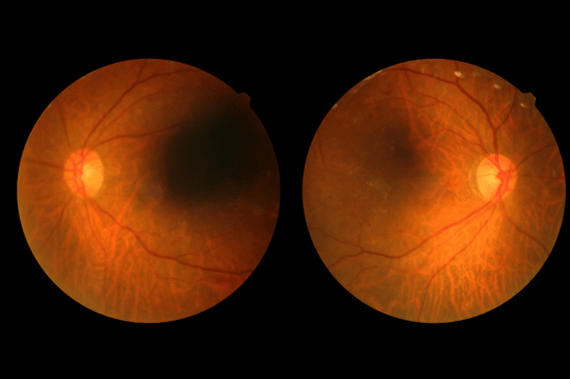
According to new research, the prevalence of diabetes-related eye diseases, including more than mild diabetic retinopathy (DR) and vision-threatening diabetic retinopathy (VTDR), is at an all-time high and is only projected to increase in the coming decades as the number of diabetes cases in the U.S. continue to grow.
JAMA Ophthalmology recently published the study, “Prevalence of Diabetic Retinopathy in the U.S. in 2021,” calling attention to the staggering number of people living with diabetes-related eye disease. The analysis estimated that, in 2021, 9.6 million people in the U.S. had diabetic retinopathy (approximately 1 out of every 4 people with diabetes), while 1.84 million people had vision-threatening diabetic retinopathy (approximately 1 out of every 20 people with diabetes).
Diabetic retinopathy is a complication of diabetes that can lead to vision loss and blindness. It occurs when high blood sugar levels cause damage to blood vessels in the retina. If left untreated, diabetic retinopathy may lead to vision-threatening diabetic retinopathy, which can result in irreversible blindness.
According to the study, the prevalence of diabetes-related eye disease among individuals aged 40 years and above has more than doubled since last estimated in 2004. The research team also noted the instances of diabetes-related eye disease are only expected to climb due to the increasing burden of diabetes.
“It has been projected that, by 2060, 60.6 million US adults (17.9%) will have diabetes, increasing the number of people living with diabetes complications, such as vision loss from DR,” the research team stated. “Forecasting studies project a nearly 3-fold increase in the number of individuals in the US with diabetic retinopathy (from 5.5 million to 16.0 million) and vision-threatening diabetic retinopathy (from 1.2 million to 3.4 million) between 2005 and 2050.”
The prevalence of diabetic retinopathy and vision-threatening diabetic retinopathy in individuals younger than 40 is also expected to increase, according to the study. Among the youngest age bracket analyzed, which ranged from 0 to 24 years, over 10% of individuals with diabetes were found to have diabetic retinopathy, while the proportion rose to nearly 20% among those aged 25 to 39 with diabetes.
These statistics might seem daunting; however, there is still hope. Diabetic retinopathy is generally a slow progressing disease with various stages – some that are vision-threatening, and others that are not. Furthermore, symptoms of diabetic retinopathy, such as vision loss and blindness, can be mitigated or possibly even prevented with early diagnosis.
Fortunately, new technologies and improved ophthalmic imaging modalities have developed to bring early diagnosis to the point-of-care. LumineticsCore™ (formerly IDx-DR) is one such modality. Utilizing autonomous AI to detect diabetic retinopathy (including macular edema), LumineticsCore can image, identify, diagnose, and recommend next steps at the point-of-care, without the involvement of an eye care provider. While treatment for all levels of diabetic retinopathy has the potential to be effective, early detection is perhaps the best defense patients have against diabetes-related vision loss and blindness. Learn more about LumineticsCore (formerly IDx-DR), an AI diagnostic system that autonomously diagnoses patients for diabetic retinopathy (including macular edema).